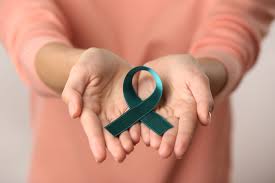


Do you know what cervical cancer is and what causes this complicated condition in women? Do you know what part of the body is called the «neck of the womb? That is precisely where this condition called «cervical cancer» occurs. It is the lower part of the uterus, and cervical cancer here is caused by the Human Papilloma Virus (HPV). This can be prevented with the help of HPV vaccination easily available given proper medical consultation.
Understanding cervical cancer
Cervical cancer can be detected in the pre-cancerous stage by going for a Pap test, also called a Pap smear. The process involves collecting cells from the cervix (the lower, narrow end of the uterus that is on the top of the vagina). The condition is easy to detect, and yet, ironically, India remains the country with the highest number of deaths due to cervical cancer. These deaths are painful. By the time the condition reaches the fatal stage, a patient goes through a lot of troubles, like the tumour infiltrating nerves, ligaments, and bones, obstructing lymphatics and blood vessels. It can also create rectovaginal and vesicovaginal fistulas that pass urine/ stool through the vagina. Foul smell from vaginal discharge and incontinence (inability to control urine) leads to social isolation, broken marriages, depression, and guilt.
Symptoms
The pre-cancerous stage might not have any symptoms, but as the condition advances. Some of the signs include bleeding from vagina, foul-smelling white discharge through the vagina, passing of urine/ stool through the vagina, blood in urine, loss of bladder control, change in bladder bowel habit, severe bone pain and pain in the back or side due to hydronephrosis/kidney failure, swelling in one of the legs, constipation, and nausea/ vomiting.
Treatment
Hysterectomy (surgical removal of the uterus, cervix, part of vagina and nearby lymph nodes) is the treatment of choice. Hysterectomy can cure the early stages of cancer and prevent a recurrence. A full range of treatment options includes radiotherapy, brachytherapy, chemotherapy, targeted drug therapy, and immunotherapy.
How can palliative care make a difference?
Palliative care is a basic human right recognised under international human rights law. Essential components of palliative care include the prevention, anticipation, and management of symptoms by a multidisciplinary team, which addresses not only physical symptoms but also emotional, psychosocial, and spiritual problems. The multidisciplinary team consists of pain and palliative care specialists, radiotherapists, palliative care nurses, counsellors (psychologists), social workers, physiotherapists, dieticians, and caregivers. Pain and palliative care specialist evaluates the patient to understand the gravity of the problems and the need to involve other members of a multidisciplinary team. After a joint discussion with the members of a multidisciplinary team; and an understanding of the patient’s wishes, and religious and cultural beliefs; an initial treatment plan is made to provide maximum relief from the above-mentioned symptoms. Once the patient improves and is ready to be discharged, the family members/caretaker are trained to manage the patient at home under the supervision of the multidisciplinary team. Despite a slew of benefits, less than 1% of India’s population has access to palliative care. Most regions of India, with the exception of Kerala, have very few palliative care facilities.
Benefits
As discussed above, palliative care is most effective in complicated conditions. When it comes to cancer, palliative radiotherapy reduces the size of tumors, vaginal discharge, vaginal bleeding, size of fistulas, nutritional problems, bedsores, and contractures. It improves quality of life, interpersonal relations, and survival rates. The services here make people understand that with willpower and medical support, they can regain their normal lifestyle and live symptom-free.
Myths
Patients have common myths about cervical cancer, such as that they might need a Pap smear every year and that HPV can only affect those who have multiple partners. Also, many people think that the infection will cure itself on its own and need no medical attention. None of these are true, and such patients can get infected. Most importantly, cervical cancer is not hereditary, and one does not need to worry about it passing to the next generation. Get in touch with a healthcare professional before coming to any conclusion.
Dr Survesha Khanna is the founder of Dharamshila Rahat Supportive and Palliative care centre